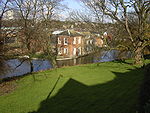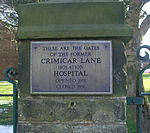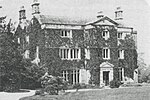Ringinglow

Ringinglow is a village in the western section of Sheffield, England. It is on the western border of Ecclesall Ward, and although it is within the boundary of Sheffield, it is self-contained, being entirely surrounded by open countryside. The village now falls within the Fulwood ward of the City. The village is focussed on the intersections of Fulwood Lane and Sheephill Road (historically this section was known as Houndkirk Road) with Ringinglow Road. The sources of the Porter Brook and Limb Brook, both tributaries of the River Sheaf, are near the village. The Norfolk Arms, a pub in the village, is often used as a staging-post by ramblers following one of these rivers out of Sheffield towards the Peak District National Park, the eastern boundary of which runs through the village. The Peak District Boundary Walk runs through the village.
Excerpt from the Wikipedia article Ringinglow (License: CC BY-SA 3.0, Authors, Images).Ringinglow
Ringinglow Road, Sheffield
Geographical coordinates (GPS) Address Nearby Places Show on map
Geographical coordinates (GPS)
| Latitude | Longitude |
|---|---|
| N 53.3494 ° | E -1.565 ° |
Address
Ringinglow Road
Ringinglow Road
S11 7TS Sheffield
England, United Kingdom
Open on Google Maps









